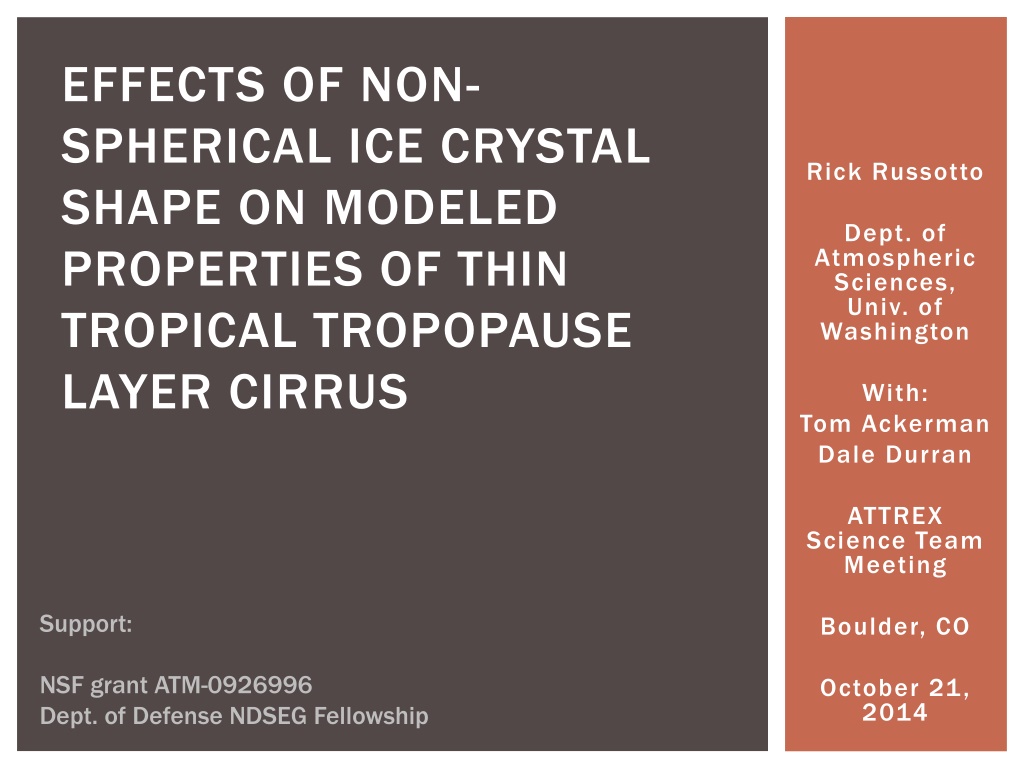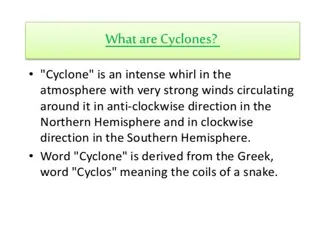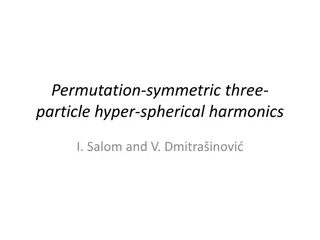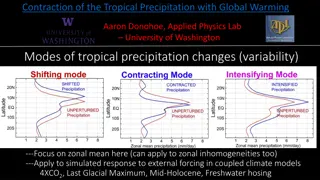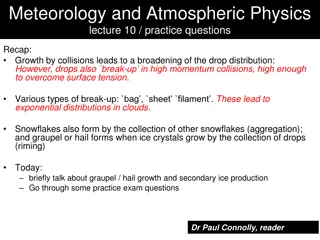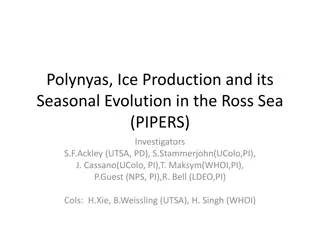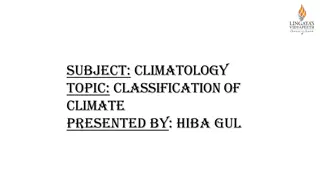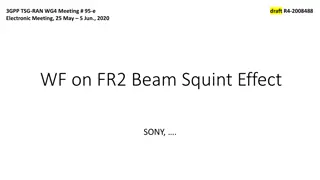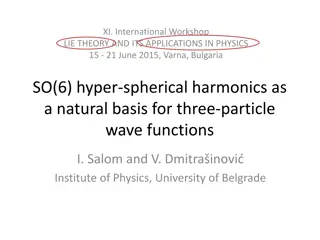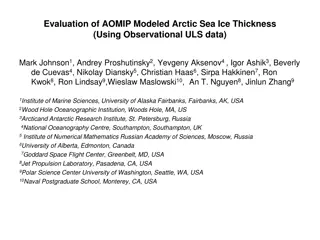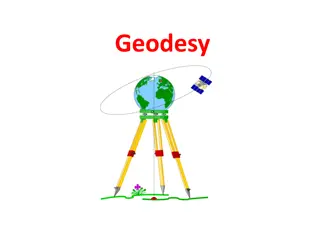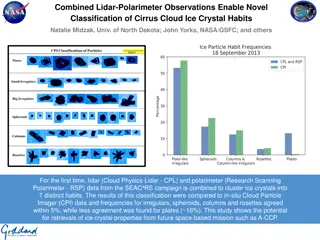Effects of Non-Spherical Ice Crystal Shape on Modeled Properties of Thin Tropical Tropopause Layer Cirrus
This study explores the impact of non-spherical ice crystal shapes on the properties of cirrus clouds in the thin tropical tropopause layer. Incorporating realistic ice crystal shapes into models affects fall speed, growth rate, and radiative absorption, influencing the time evolution of clouds. The model overview includes dynamics, microphysics, and radiation components, with a focus on representing plates and columns. The calculation of fall speed considers the Stokes regime, analytical expressions for terminal velocity, and corrections for spheroids based on aspect ratio.
Download Presentation

Please find below an Image/Link to download the presentation.
The content on the website is provided AS IS for your information and personal use only. It may not be sold, licensed, or shared on other websites without obtaining consent from the author. Download presentation by click this link. If you encounter any issues during the download, it is possible that the publisher has removed the file from their server.
E N D
Presentation Transcript
EFFECTS OF NON- SPHERICAL ICE CRYSTAL SHAPE ON MODELED PROPERTIES OF THIN TROPICAL TROPOPAUSE LAYER CIRRUS Rick Russotto Dept. of Atmospheric Sciences, Univ. of Washington With: Tom Ackerman Dale Durran ATTREX Science Team Meeting Support: Boulder, CO NSF grant ATM-0926996 Dept. of Defense NDSEG Fellowship October 21, 2014
INTRODUCTION Cirrus in TTL important for: Radiative absorption Water vapor transport into stratosphere Why use a cloud-resolving model? Understand effects of mesoscale, radiatively induced circulations Previous work (Dinh et al., 2010, 2012, 2014) assumed all spheres Observations (Lawson et al., 2008) suggest at least some plates and columns Existing code could not maintain largest crystals
INTRODUCTION New simulations incorporate more realistic ice crystal shapes Fall speed Growth rate Radiative absorption How does this affect time evolution of clouds?
COMPONENTS OF MODEL Dynamics: System for Atmospheric Modeling (SAM) (Khairoutdinov and Randall, 2003) Microphysics: Bin microphysics scheme (Dinh and Durran, 2012) Radiation: Lookup table of broadband ice crystal absorption cross sections
SIMULATION SETUP Initialization: No large-scale flow Pre-existing cloud Ice crystals: 3 m radius Sounding: Nauru, January average Domain: 2D (x and z) 432 km (x) by 3.25 km (z) x = 100 m z = 25 m t = 6 s
REPRESENTING PLATES AND COLUMNS For microphysics: oblate and prolate spheroids For radiation: Collection of spheres Conserve SA/Volume ratio (Neshyba et al., 2003) Aspect ratio of 6 for now
FALL SPEED: CALCULATION Stokes regime: Large enough that fluid is continuum Small enough that fluid s inertia is negligible Analytical expression for terminal velocity Corrections for spheroids: functions only of aspect ratio (Fuchs, Mechanics of Aerosols, 1964) Orientation: maximize horizontal cross section
GROWTH RATE: CALCULATION How to account for both size and shape? Electrostatic analogy: growth rate capacitance Equal to radiusfor spheres Spheroids: function of major and minor axes capacitance
RADIATION: PARAMETERIZATION PROCESS Ice crystal properties: Mass Aspect ratio Single scattering properties: Extinction cross section ( ) Absorption cross section ( ) Asymmetry factor ( ) Mie scattering code Cloud, temperature, gas profiles Bulk ice properties: Complex refractive index ( ) 1-D spectral radiative transfer model Broadband absorption cross sections SW and LW fluxes at cloud boundaries Invert SAM radiation scheme
RESULTS AND FUTURE WORK
CIRCULATION AT 6 HOURS u (m/s), 6 hours Z (km) Z (km) w (m/s), 6 hours Z (km) Z (km)
LIFTING OF CLOUD Preliminary: additional lifting due to Fall speeds (2/3) Radiation (1/3)
FUTURE WORK Distinguish effects of fall speed, growth rate, and radiation Other ways to get single-scattering properties T-Matrix method (Mishchenko & Travis, 1998) Improved geometric optics method (Yang & Liou, 1996) Use of ATTREX data: Ice crystal size distributions (also habits) Environmental water vapor distributions Inertial-gravity waves?
CIRCULATION AT 6 HOURS u (m/s), 6 hours Z (km) Z (km) w (m/s), 6 hours Z (km) Z (km) (m/s), 6 hours Z (km) Z (km)
Other ways to get single-scattering properties T-Matrix method (Mishchenko & Travis, 1998) Improved geometric optics method (Yang & Liou, 1996) Existing databases (Fu et al., 1999; Yang et al., 2013) Exact scattering solution for spheroids (Asano & Sato, 1980)
GROWTH RATE: CALCULATION General growth rate equation: (Pruppacher and Klett, 1978) ?? ??= 4??(?ice 1) ?v? ?sat,ice? v + ?? ?? ?v? 1 ? a? m = ice crystal mass C = capacitance Sice = saturation ratio w.r.t. ice Rv = gas constant for water vapor T = temperature esat,ice = sat. vapor pressure over plane surface Ls= latent heat of sublimation k a= modified thermal conductivity of air D v= modified diffusivity of water vapor in air Shape dependence for: C D v k a
GROWTH RATE: CAPACITANCE METHOD General growth rate equation (Pruppacher and Klett, 1978): ?? ??= 4??(?ice 1) ?v? ?sat,ice? v + ?v? 1 ?? ?? ? a? Expressions for capacitance, C: Spheres: C = r Oblate spheroids: m = ice crystal mass C = capacitance Sice = saturation ratio w.r.t. ice Rv = gas constant for water vapor T = temperature esat,ice = saturation vapor pressure over plane surface Ls= latent heat of sublimation k a= modified thermal conductivity of air D v= modified diffusivity of water vapor in air r = radius of sphere ?2 ?2 ?? sin 1 ?where ? = ? = 1 Prolate spheroids: ? ?+? ? ? = ?2 ?2 where ? = ln a = semi-major axis of ellipse of revolution b = semi-minor axis e = eccentricity A = linear eccentricity
MORE ON GROWTH RATE Field discontinuity corrections for thermal conductivity and water vapor diffusivity (Dv , ka ) depend on particle size. What measure of size to use for spheroids? Makes a big difference.
FALL SPEEDS Stokes regime: Large enough that fluid is a continuum Small enough that fluid s inertia is negligible Analytical expression for drag coefficient And therefore terminal velocity For spheres: ??=2 9 ????? ???? ?2
FALL SPEEDS Corrections for spheroids from Fuchs, Mechanics of Aerosols (1964) Dynamic shape factor : rate of settling of equivalent mass sphere rate of settling of spheroid particle function only of aspect ratio =? ? Fall directions: maximize horizontal cross section
FALL SPEED: STOKES LAW METHOD Corrections for spheroids from Fuchs, Mechanics of Aerosols (1964) Dynamic shape factor : rate of settling of equivalent mass sphere rate of settling of spheroid particle For oblate spheroids, falling along the polar axis: 4 3 ?1/3 ?2 1 = aspect ratio = (major axis)/ (minor axis) = ? ?2 2 ?2 1 tan 1 ?2 1 + ? For prolate spheroids, falling transverse to the polar axis: 8 3 ? 1/3 ?2 1 = 2?2 3 ?2 1 ?2 1 + ? ln ? +
FALL SPEED: STOKES LAW METHOD Has been used before (Jensen et al., 2008) Only works for low Reynolds numbers, but that should be the case here: ??? ? Estimates: kg m3 Re = ? 1.2? 2= 0.162 (2 scale heights up) ? 10mm = 0.01m (based on updrafts in Dinh et al., 2010) s s ? 100 m = 0.0001 m(conservative estimate for particle size) ? 1.2 10 5kg (viscosity of air at about 180 K) m s Re 0.0135 1
PARTICLE SIZE DISTRIBUTIONS Note: these are earlier simulations that did not consider effects of shape on radiation, and also had a different growth rate calculation.
PARTICLE SIZE DISTRIBUTIONS Starting Bin
PARTICLE SIZE DISTRIBUTIONS Starting Bin
